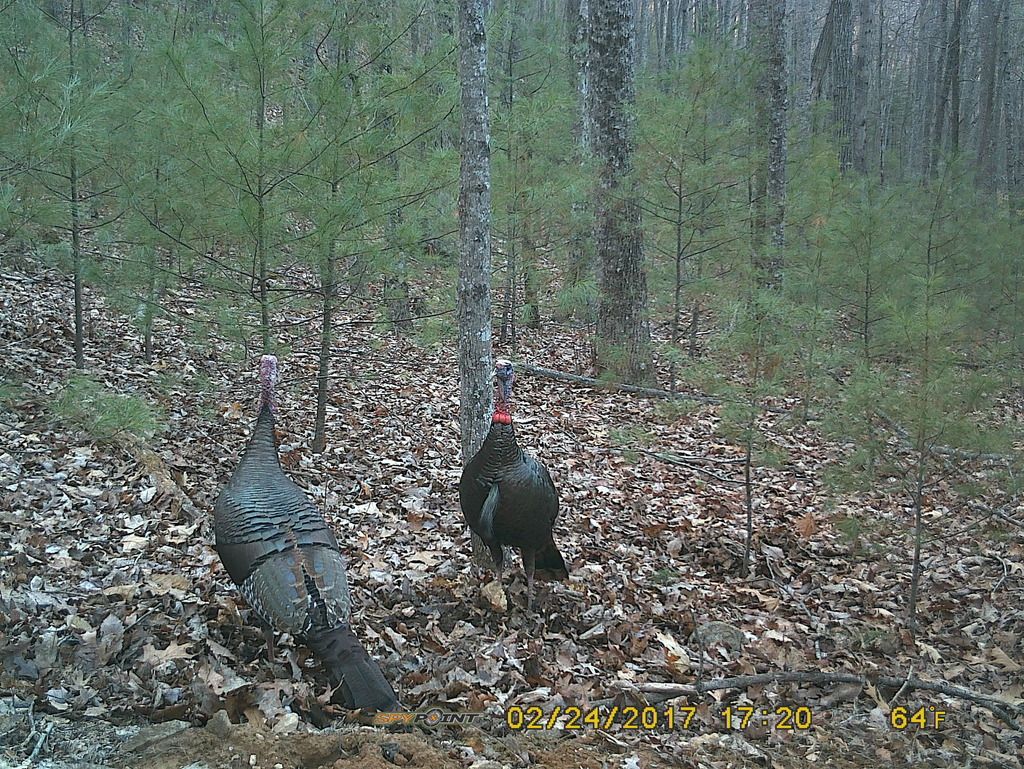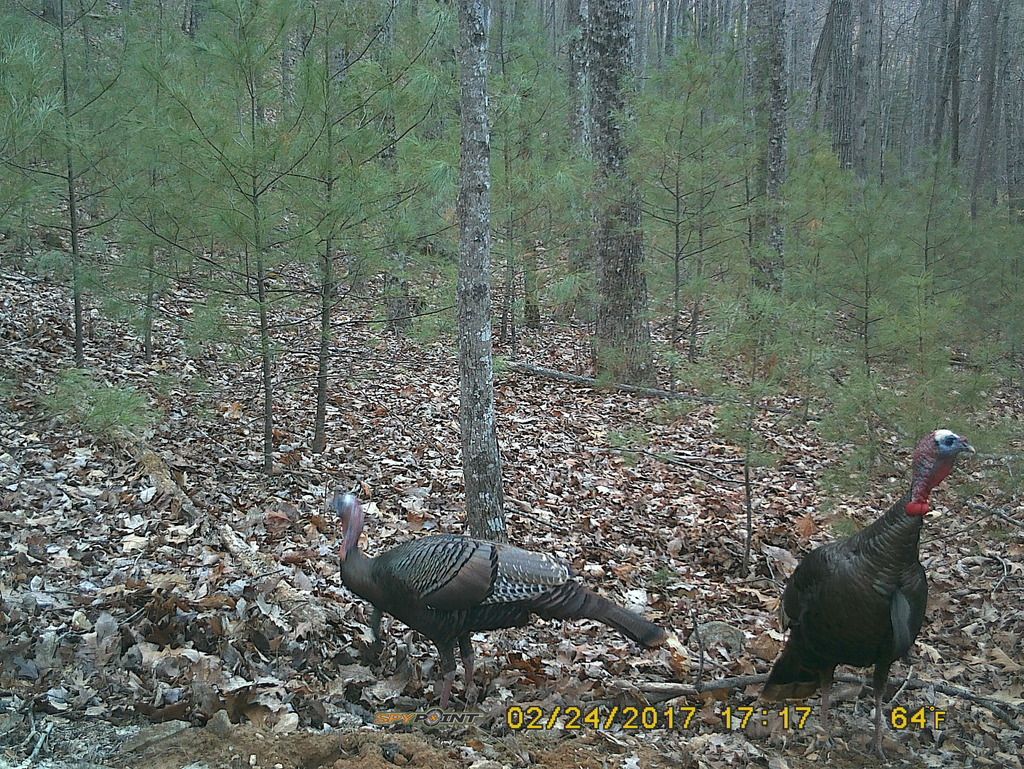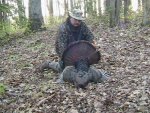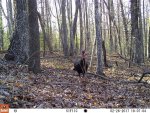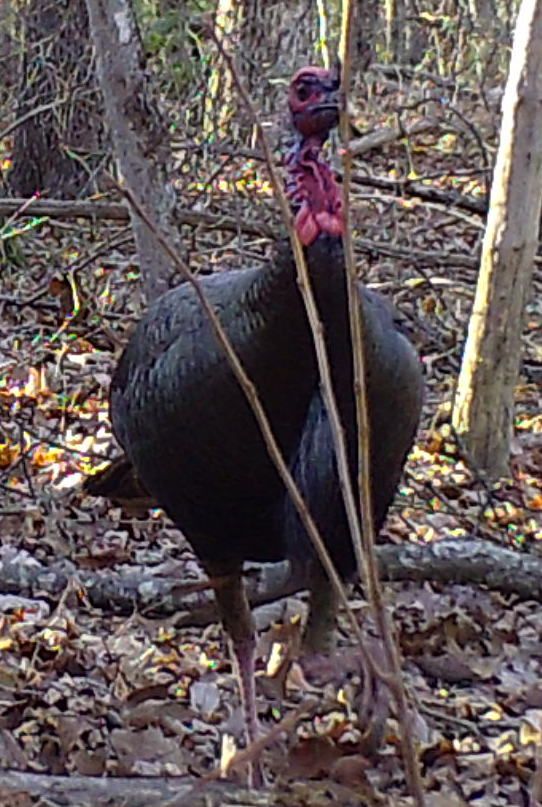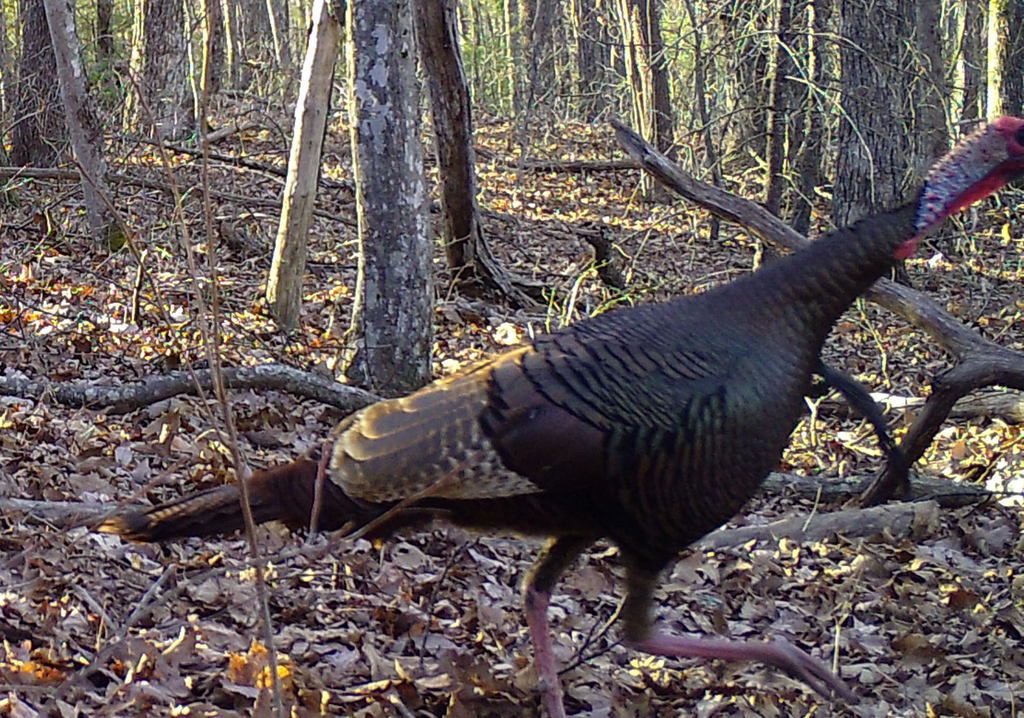Welcome Guest!
You are using an out of date browser. It may not display this or other websites correctly.
You should upgrade or use an alternative browser.
You should upgrade or use an alternative browser.
A Couple Mountain Birds
- Thread starter critterslayer
- Start date
blong
Senior Member
Nice pics! Are the small pines in the pics the invasive species that I have heard about?
bear claw
bearded driveler
Looking to be a good season
fountain
Senior Member
Mossy head gobblers?
Awesome!
critterslayer
Senior Member
Mossy head gobblers?
I heard those are only native to the blue ridge WMA, so I'm afraid these don't qualify. These are just your regular old mountain longbeards.
ryanwhit
Senior Member
Nice pics! Are the small pines in the pics the invasive species that I have heard about?
Yes. White pines. They are a native species, so "invasive" is not totally accurate in my opinion, but others disagree I'm sure. A few is ok, a complete understory of them is not. Very susceptible to fire, which is currently missing from our mountain region and the reason we have them the way we do up there now.
herb mcclure
Senior Member
A couple mountain birds
Critter, those are a nice couple of gobblers. Wishing you a great season with them.
To Blong: Thanks for mentioning the white pines in the photo. Yes, they are what are taking over the hardwoods. Like I told the forestry service earlier last year; in 50 more years man nor turkeys will be able to walk through them in some places; because they will be so thick.
To Critter again. Nope, there are not any Mossy Head turkeys on the Blue Ridge W.M.A.; and there never were any either. Why? Because the turkeys there that survived were known as Native Turkeys! They were never called by the name Mossy Heads. Critter attached below is a true descendant gobbler from Arthur Woody's surviving native turkeys; which was taken at nearly 3,000 ft. elevation near the Appalachian Trail. Zoom in the head of this native descendant, and look at the fire in that red eye.
I would like to make a quote now from a man who has worked in these turkey woods. A Mr. Kent Kammermeryer, Retired Senior Wildlife Biologist, Georgia DNR, Wildlife Resources Division, Game Management Section and I quote: "Turkeys of the highest, wildest, most remote mountains of these spines are the survivors of hundreds of years of market hunting, subsistence hunting, and poaching. Their survival is entrenched in their genes!
They could possibly be the purest strain of Eastern wild turkeys in the country. As such, they have the keenest eyesight, best hearing, and sharpest predator-avoience
skills found anywhere in the country." un-quote.
Yes, native turkeys survive in some other remote areas besides the B R WMA; mainly the Cohutta Mountains.
However, it was the B R WMA, where the state game men felt-like; there was a sustainable wild turkey population to have a turkey hunt, and they open the first Spring Gobbler Hunt season there; in 1955. Thanks to Arthur Woody, for looking after and taking the wildlife at the Blue Ridge.
herb mcclure
P S. Sorry the first photo was not the photo that I was trying to show; however, that was a descendant from the same native turkeys that Arthur Woody brought into this modern turkey world; which Mark killed last season. I will try again to show the right gobbler, which has the fire in his eyes; for you to see. I am a turkey hunter, not a PC person or a writer; as you can tell.
If the next photo doesn't work, then maybe Mark Sharpe will come to my rescue and down-load the gobbler with fire in his eyes; as he knows how.
The second photo is the gobbler that has the red eyes.
herb
Critter, those are a nice couple of gobblers. Wishing you a great season with them.
To Blong: Thanks for mentioning the white pines in the photo. Yes, they are what are taking over the hardwoods. Like I told the forestry service earlier last year; in 50 more years man nor turkeys will be able to walk through them in some places; because they will be so thick.
To Critter again. Nope, there are not any Mossy Head turkeys on the Blue Ridge W.M.A.; and there never were any either. Why? Because the turkeys there that survived were known as Native Turkeys! They were never called by the name Mossy Heads. Critter attached below is a true descendant gobbler from Arthur Woody's surviving native turkeys; which was taken at nearly 3,000 ft. elevation near the Appalachian Trail. Zoom in the head of this native descendant, and look at the fire in that red eye.
I would like to make a quote now from a man who has worked in these turkey woods. A Mr. Kent Kammermeryer, Retired Senior Wildlife Biologist, Georgia DNR, Wildlife Resources Division, Game Management Section and I quote: "Turkeys of the highest, wildest, most remote mountains of these spines are the survivors of hundreds of years of market hunting, subsistence hunting, and poaching. Their survival is entrenched in their genes!
They could possibly be the purest strain of Eastern wild turkeys in the country. As such, they have the keenest eyesight, best hearing, and sharpest predator-avoience
skills found anywhere in the country." un-quote.
Yes, native turkeys survive in some other remote areas besides the B R WMA; mainly the Cohutta Mountains.
However, it was the B R WMA, where the state game men felt-like; there was a sustainable wild turkey population to have a turkey hunt, and they open the first Spring Gobbler Hunt season there; in 1955. Thanks to Arthur Woody, for looking after and taking the wildlife at the Blue Ridge.
herb mcclure
P S. Sorry the first photo was not the photo that I was trying to show; however, that was a descendant from the same native turkeys that Arthur Woody brought into this modern turkey world; which Mark killed last season. I will try again to show the right gobbler, which has the fire in his eyes; for you to see. I am a turkey hunter, not a PC person or a writer; as you can tell.
If the next photo doesn't work, then maybe Mark Sharpe will come to my rescue and down-load the gobbler with fire in his eyes; as he knows how.
The second photo is the gobbler that has the red eyes.
herb
Attachments
M Sharpe
Senior Member
herb mcclure
Senior Member
A couple mountain birds
Thank, you Mark, for showing that red eye on this Blue Ridge WMA gobbler. I am not skilled enough yet at putting photos on the forum; as my two photos are the only ones that I have ever done.
Anyway, this is the meanest looking gobbler I have ever come across paths with. I think he was ready to fight. I will need to go back and find out.
herb mcclure
Thank, you Mark, for showing that red eye on this Blue Ridge WMA gobbler. I am not skilled enough yet at putting photos on the forum; as my two photos are the only ones that I have ever done.
Anyway, this is the meanest looking gobbler I have ever come across paths with. I think he was ready to fight. I will need to go back and find out.
herb mcclure
critterslayer
Senior Member
I appreciate the pictures, Mr. Herb. Does every native have the fire in his eyes you speak of? I'm interested to see more pictures, do you have more you could share?
Beagler282
“Rabbit Man”
Stewart I hope you can do some video on them birds this season like you did during deer season.Best of luck!!
critterslayer
Senior Member
Stewart I hope you can do some video on them birds this season like you did during deer season.Best of luck!!
Thanks, Mr Ray. Last spring I was finally able to get some turkey hunts on film and I really enjoyed it. I won't hunt without the video cameras now. I hope you have a good season as well!
Luke0927
Senior Member
Thanks for sharing I haven't climbed the mountain since deer season to my favorite spot. Its and old Blue Ridge WMA area as well!
whitetailfreak
Senior Member
Pulling up White Pine sapplings from the roots in my favorite bottoms and ridgetops, is now a part of my preseason preparation for deer and a lesser extent turkey. I imagine I probably pulled thousands last year.
Last edited:
herb mcclure
Senior Member
A couple mountain birds
Critterslayer, only the very mean ones have those red eyeballs, and they also have red spurs; to Fogg you with.
Critterslayer, only the very mean ones have those red eyeballs, and they also have red spurs; to Fogg you with.
Nice pics , hope u have good luck with them , can't wait to see your videos , really enjoy all that u post !
AliBubba
Senior Member
FYI - The Forest Service is closing Duncan Ridge Road which runs north on Coopers Creek WMA for maintenance. I am bumming since that's the places I have hunted turkeys for years. Also they are planning burns south of Fish Gap in 2017.
critterslayer
Senior Member
FYI - The Forest Service is closing Duncan Ridge Road which runs north on Coopers Creek WMA for maintenance. I am bumming since that's the places I have hunted turkeys for years. Also they are planning burns south of Fish Gap in 2017.
Sorry to hear they are closing your access. Have you killed many on Duncan ridge? I mainly hunt CNF outside of WMA's.
herb mcclure
Senior Member
A couple mountain birds
Critterslayer, my apology to you for miss-representing you as the author; of your great thread; A Couple of Mountain Gobblers that I commented on a thread of my own titled Credentials; this AM.
The color on those mountain gobblers that you showed; are more than just mountain gobblers. That broad dark band around the outer end of their tail feathers and their over-all color; singles-out to me; they are of good genes from original mountain gobblers. You don't see many gobblers today with those broad dark bands at the end of their tail feathers.
herb mcclure
Critterslayer, my apology to you for miss-representing you as the author; of your great thread; A Couple of Mountain Gobblers that I commented on a thread of my own titled Credentials; this AM.
The color on those mountain gobblers that you showed; are more than just mountain gobblers. That broad dark band around the outer end of their tail feathers and their over-all color; singles-out to me; they are of good genes from original mountain gobblers. You don't see many gobblers today with those broad dark bands at the end of their tail feathers.
herb mcclure
Similar threads
- Replies
- 14
- Views
- 1K

